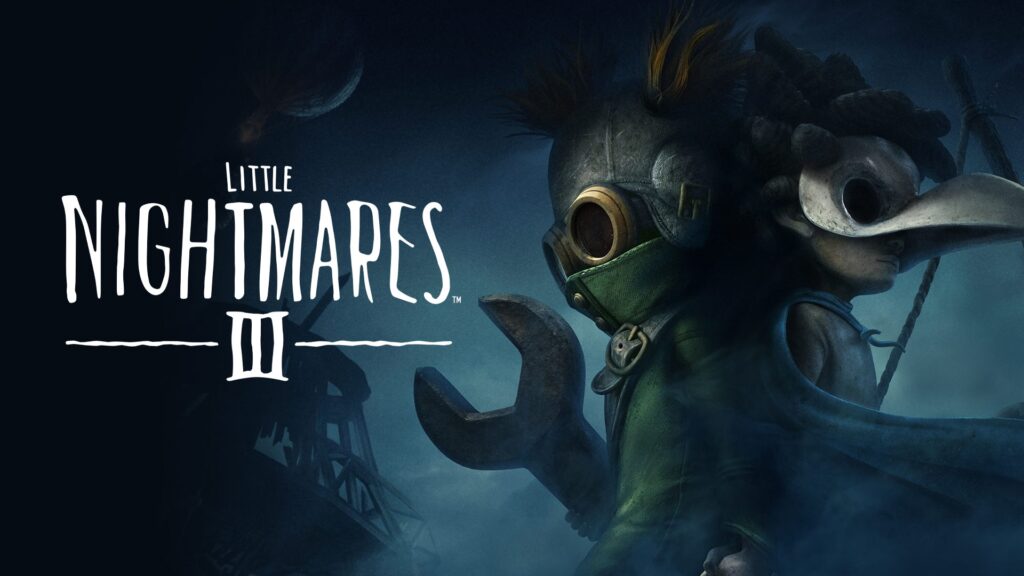Cooper Miller
Contributing Writer
“Little Nightmares” is a puzzle-platformer horror game franchise created by Tarsier Studios and produced by Bandai Namco, that follows a handful of different characters on their journeys through a twisted alternate world called “The Nowhere.”
After two very successful games, with the first releasing on April 28, 2017, and the second on February 11, 2021, fans were more than eager to see what deformed abominations the developers had in store for them after “Little Nightmares III” was announced in August 2023 during Gamescom’s “Opening Night Live” event.
Along with the announcement, art was released featuring two brand new main characters named Low, who was seen sporting a white raven mask and blue cape, and Alone, who was seen with a full-body yellow turtle neck and pilot aviator goggles.
One key element that sets this game apart from its two predecessors is its brand-new online co-op feature, which allows for two people to play at once, as opposed to the second installment, “Little Nightmares II,” which only lets one player brave the Nowhere, with only an AI as an ally.
The first game, aptly named “Little Nightmares,” followed a small, yellow raincoat-wearing child named Six, who spent the entire game dragging herself through a large ship called “The Maw,” all the while starving and having to evade a multitude of obese horrors who tried to rip her apart to appease their own ravenous hunger.
“Little Nightmares II” serves as a prequel to the first game, and uses the new main character, Mono, as a vehicle to give us some backstory on how Six became the ruthless killer we see her become in the first game.

After playing “Little Nightmares III,” the time in which the narrative takes place is still unknown, with every character present in the game, not including The Herd, which appears in all three games, including settings, being completely new and original
Staying true to the “Little Nightmares” formula, Low and Alone are small children forced to survive in a cruel and massive world.
In the second game, we were introduced to a rainy city landscape called the Pale City, but at the beginning of three, we were thrust into the inverse of this setting, being a post-apocalyptic desert populated by near destroyed buildings called The Necropolis.
After escaping the colossal Monster Baby, who has the ability to turn anything into stone with her gaze, our two protagonists use Low’s supernatural ability to enter mirrors to transition into the next stage.
With the exception of Alone, every main character has some sort of paranormal ability that gives them a much-needed edge in “The Spiral,” or the spread of landscapes located in The Nowhere.
In the second chapter, the two faced off against The Supervisor, a six-legged spider woman, who tracks and surveils the children with animalistic dedication.
After a gripping chase sequence, she eventually gets crushed, and the two break through another mirror, segueing into the third chapter.
The Carnevale sequence gives us the most interesting visuals in the entire game, being a dreary interpretation of a carnival draped in muted purples and various grays, swarming with the gluttonous and destructive Herd.
The main antagonists of this sequence, the vile Kin and Mini-Kin, successfully chase off Low and Alone, forcing them into a hot air balloon and into the final stage of the game, The Institute.
Over the course of the game, we catch little glimpses of Low in another reality, trifling away in what seems to be a room in a mental institution – the same one we see in this sequence, effectively linking The Nowhere and the “real” world.
The end of the game has left the fanbase divided, with some saying that the ending is depressing with no real deeper meaning, while others disagree, settling on the game being a standalone entry in the “Little Nightmares” franchise, with sad endings being par for the course, with every game and DLC up to this point ending in betrayal or death.
It’s too soon to tell whether the ending is good or bad, with the game being more or less unfinished narratively, with an expansion set to release sometime in the near future in two parts.
The franchise remains an absolute gem in the horror genre, and the game only adds more love to a series that is already loved by millions across the globe, with 20 million units sold worldwide across all three games.
In general, the game does a great job at doing what “Little Nightmares” has always set out to do – make you feel small and powerless.

